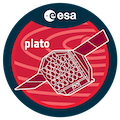Speaker
Description
Recent advancements in astronomical polarimetry have enabled the detection and characterization of exoplanets, providing insights into their orbital parameters, atmospheric composition, and reflective properties. By combining polarimetric studies with spectroscopy and photometry, a comprehensive understanding of exoplanets, including non-transiting hot Jupiters like Ups And b, can be achieved. The polarimetric observations of the Ups And star system were conducted over a period of nearly three years, capturing data at different orbital phases of Ups And b. We used T60 telescope in combination with high-precision DiPol-2 polarimeter, which provided an exceptionally high accuracy. To identify periodic signals in our unevenly sampled polarimetric data, we employed the Lomb-Scargle periodogram method. Our findings revealed a polarimetric signal precisely at half of the known orbital period of Ups And b, as expected from the polarimetric data of an exoplanet. By applying the Rayleigh- Lambert scattering model, we derived constraints on the exoplanet’s orbital parameters, including inclination angle, longitude of periastron, and longitude of the ascending node. Combining these results with previous spectroscopic studies, we determined the planetary mass, mean density, and surface gravity of Ups And b. Additionally, our analysis of Transiting Exoplanet Survey Satellite (TESS) photometric data for Ups And provided further evidence suggesting the presence of starspots, which likely affected the observed polarimetric signal of the exoplanets. Consequently, accurately quantifying the scattering atmosphere radius and planetary albedo of Ups And b proved to be elusive. In conclusion, high-precision polarimetry can serve as a useful tool for studying exoplanets, allowing for the deduction of their orbital parameters and atmospheric properties. This study highlights the significant potential of astronomical polarimetry in characterizing various types of exoplanets. By incorporating multiple observational techniques, we can enhance our understanding of the complex nature of explanatory systems.

